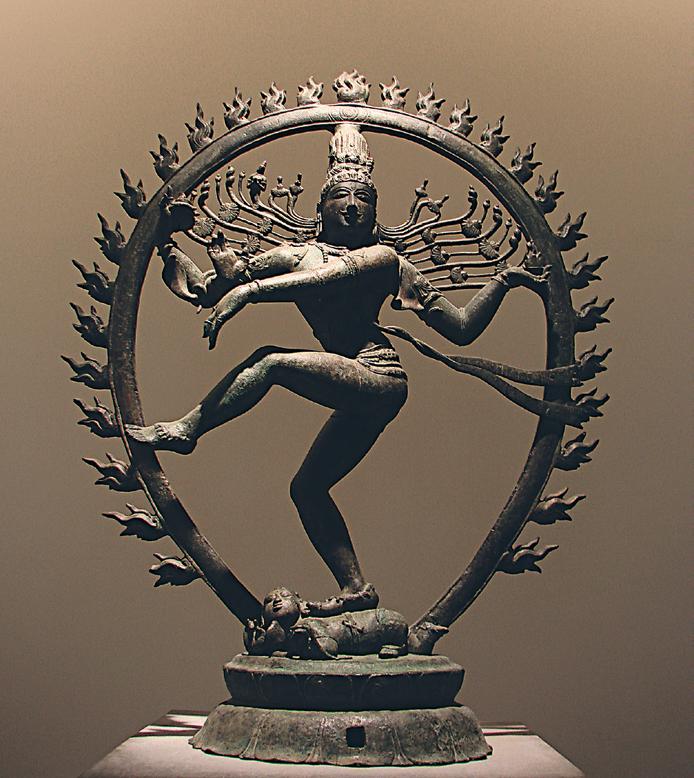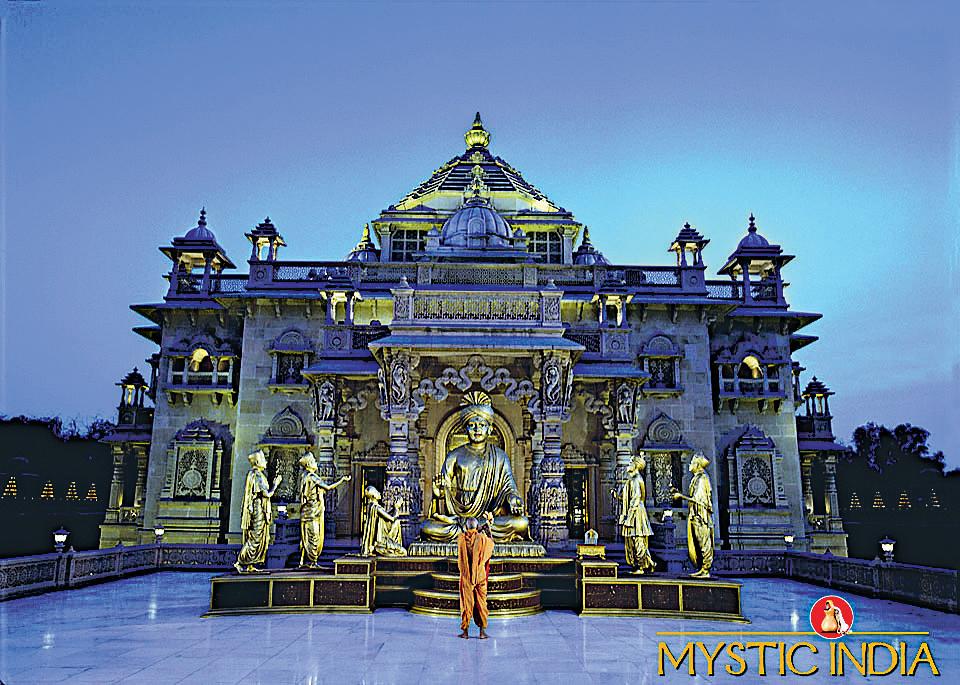
7 minute read
All things Indian…
from 2009-08 Melbourne
by Indian Link
Mahatma Gandhi. In 1969, the UK issued a series of stamps commemorating the centenary of Mahatma Gandhi.
An ancient civilisation
India’s history and culture are ancient and dynamic. It began with the Indus Valley civilization around 3000 BC, a mysterious culture along the Indus River. settlement sites like Mohenjo-daro, harappa and Lothal constituted the inhabitants of the Indus River valley, which developed an urban culture based on commerce and sustained by agricultural trade. this civilization declined around 1500 B.C., probably due to ecological changes. during the second millennium B.C., pastoral, aryan-speaking tribes migrated from the northwest into the subcontinent. as they settled in the stance of resistance to tyranny through non-violence, which has since inspired movements for civil rights and freedom across the globe. Gandhiji led by example, speaking the truth at all times, living modestly in a self-sufficient community, wearing the traditional dhoti and shawl woven on a hand-spun charka he ate simple vegetarian food and fasted, both for self-purification and social protest.

Time magazine named Gandhiji the Man of the Year in 1930, and he was also runner-up to albert einstein as Person of the Century at the end of 1999. time also named the dalai Lama, Lech Walesa, dr. Martin Luther King, Jr., Cesar Chavez, aung san suu Kyi, Benigno aquino, Jr., desmond tutu and Nelson Mandela as Children of Gandhi and his spiritual heirs to non-violence. Gandhi never received the Nobel Peace Prize, although he was nominated five times between 1937 and 1948. he was to receive the Prize in 1948, but his assassination prevented the award, and when the dalai Lama was awarded the Prize in 1989, the chairman of the committee said that this was “in part a tribute to the memory of Mahatma Gandhi.” today, all the currency notes in circulation in India contain a portrait of middle Ganges River valley, they adapted to antecedent cultures. the political map of medieval India was made up of myriad kingdoms with fluctuating boundaries. In the 4th and 5th centuries a d., northern India was unified under the Gupta Dynasty. During this period, known as India’s Golden age, hindu culture and political administration reached new heights. Large parts of India were united under ashoka. he converted to Buddhism, and oversaw the spread of Buddhism to other parts of asia. In Under the Mauryas hinduism took the shape that fundamentally informs the religion down to the present day. Islam came to India in the 8th century, and by the 11th century had firmly established itself as a political force; the dynasties of the Lodhis, tughlaqs and others, whose remains are visible around north India, were finally succeeded by the Mughal empire, under which India once again achieved a measure of political unity. european presence in India dates to the 17th century. Towards the end of this century, the Mughal empire began to disintegrate, paving the way for regional states. In the contest for supremacy, the english emerged ‘victors’, their rule marked by the conquests at the battlefields of Plassey and Buxar.
Gandhi’s birthday on october 2 is a national holiday in India. the UN General assembly marks the day as International day of Non-Violence. India observes January 30, the day of his assassination, as Martyr’s day, to commemorate those who gave up their lives in service of the nation.
In New delhi, Birla house, where Gandhiji was assassinated on 30 January 1948, is open to the public as the Gandhi smriti or “Gandhi Remembrance”. It preserves the room where Mahatma Gandhi lived the last four months of his life and the grounds where he was shot while holding his nightly public walk. a Martyr’s Column now marks the place where Gandhiji fell. on the same day, schools in many countries observe the school day of Non-violence and Peace (deNIP), founded in spain in 1964.
The Rebellion of 1857-58, which sought to restore Indian supremacy, was crushed; and with the crowning of Victoria as empress of India, the incorporation of India into the empire was complete. successive campaigns had the effect of driving the British out of India in 1947. the history of India is punctuated by constant integration with migrating peoples and with the diverse cultures that surround India. Because of its central location, it became a crossroad of cultures from China to europe.
India’s history is more than just a set of unique developments in a definable process; it is, in many ways, a microcosm of human history itself, a diversity of cultures all impinging on a great people and being reforged into new synergies.
In God we trust!
India is a country of 1.14 billion, with a vast diversity of culture and religion. Yet it is amazing is that its peoples live in harmony, not just with each other, but also with their differing beliefs and faiths. statistics recorded in 2005 indicate that the population can be broken up into hindu 72.04%, Muslim 12.26% (Sunni 8.06%, Shi’a 4.20%), Christian 6.81% (Protestant 1.74%, Roman Catholic 1.62%, Orthodox 0.22%, other Christian 3.22%), traditional beliefs 3.83%, Sikh 1.87%, Buddhist 0.67%, Jain 0.51%, Baha’i 0.17%, Parsi (Zoroastrian) 0.02%, nonreligious 1.22%, atheist 0.17%, other 0.43%.
Religion is very important in India: it is a way of life and an integral part of the entire the underlying tenets of hinduism cannot be easily defined, as no unique philosophy forms the basis of the hindu faith. hinduism is so diversified in its theoretical premises and practical expressions that it has been called a “museum of religions”. this religion cannot be traced to a specific founder nor does it have a “holy book” as a basic scriptural guide. The Rig Veda, Upanishads and the Bhagwad Gita can all be described as the sacred text of the hindus.

Indian society. In fact India has the second largest population of Muslims in the world after Indonesia.
Unlike other religions, hinduism does not advocate the worship of one particular deity. one may worship shiva or Vishnu or Rama or Krishna or some other gods and goddesses or one may believe in the ‘supreme spirit’ or the ‘Indestructible soul’ within each individual, and still be called a good hindu. Festivals and ceremonies are associated not just with gods and goddesses but also with the natural elements. the popular festivals deepawali, holi, dussehra, Ganesh Chaturthi, Janamasthmi and shiva Ratri, lend hinduism its amazing popular appeal and make its traditions rich and colourful.

Religion permeates every aspect of life, from common-place daily chores to education and politics. Common practices have crept into most religious faiths in India, and many of the festivals that mark each year with music, dance and feasting
Indian tradition. It is at the root of moral and social norms and behaviours which have shaped the country’s destiny to date. the majority of the population practice hinduism. Within this majority, there are significant differences in the belief systems and caste divisions. But hindus will all go to revered pilgrimage sites, and if they go to a Brahman priest for a birth, marriage and/or death rituals, they will hear the same sanskrit verses dating from hundreds of years.
Muslims are the most prominent other religious group and are an integral part of are shared by all communities. It is common to see festivals like holi, diwali, even eid and Christmas being celebrated with enthusiasm and vigour by all communities, regardless of their religious backgrounds. each religion has its own pilgrimage sites, heroes, legends and culinary specialities, but their ability to intermingle in a sense of unity has created a unique diversity that is the very pulse of society.
Religious tolerance is the hallmark of a secular country, and India rightly claims to be one. Citizens are permitted to freely practice their faiths in a spirit of harmony.
Curry!
That’s the synonym by which Indian cuisine is characterised globally, much to the annoyance of Indians. Indian cuisine is rich in its cultural diversity, encompassing not just regions, but flavours, condiments, herbs, spices, vegetables and cooking techniques that are individual to states, communities and even traditions. Indian cuisine reflects its ethnic diversity, while religious beliefs too have played an influential role in the evolution of its cuisine. Cross-cultural interactions with the Middle East and Central Asia, with a touch of the Mediterranean make it a unique culinary baked flat breads like nan. Chicken and meat are a part of this range, with thick dairybased gravies or tandoori-cooked victuals. Paneer (cottage cheese) is popular in this cuisine. The internationally acclaimed Rogan Josh hails from this region. On the other hand, East Indian cooking is famous for its sweets like rasagolla, sandesh, etc. Traditional dishes are delicately spiced and fish is commonly consumed. South Indian cuisine is distinguished by a greater emphasis on rice as the staple grain, the ubiquity of sambar and rasam, a variety of pickles, and the liberal use of coconut and particularly coconut oil and curry leaves. Vegetable stews cooked with spices, beneficial effects for preventing and treating certain cancers, treating infectious disease, promoting health and treating aging. Mechanisms underlying these effects include free-radical scavenging effects, immune system modulation, brain neurotransmitter modulation and hormonal effects.
All matter is thought to be composed of five basic elements which exhibit the properties of earth (prithvi), water (jala), fire (tejas), wind (vayu) and space (akasha). These elements do not exist in isolated forms, but always in a combination, in which one or more elements dominate. According to ayurveda, the human body is composed of derivatives of the five basic elements, in the form of doshas, tissues (dhatus) and waste products (malas). The most fundamental and characteristic principle of ayurveda is called “tridosha” or the Three Humours. Doshas are the physiological factors of the body, seen as all pervasive, subtle entities, and are categorized into vata, pitta and kapha. Vata regulates movement and is represented by the nervous system. Pitta is the principle of biotransformation - the cause of all metabolic processes in the body. Kapha is the principle of cohesion and functions through the body fluids. Together, these three doshas determine the physiologic constitution of an individual.
Ayurveda strongly recommends contentment in spirit, mind and body, but










